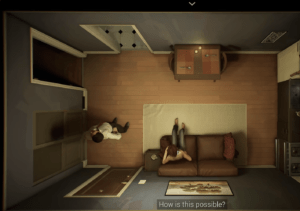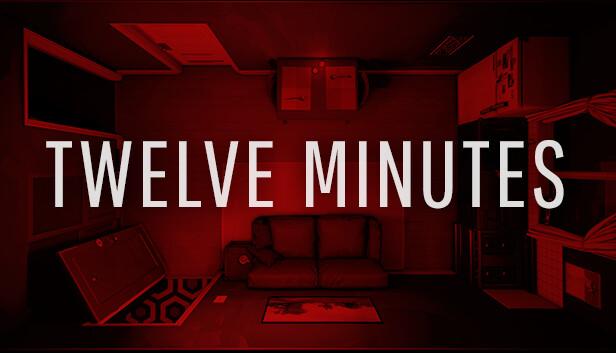Twelve Minutes is a mystery/thriller game developed by Luís António and Annapurna Interactive in 2021. The game contains sensitive themes, and is generally built for adults and older teenagers. The game’s main mechanic – the time loop which allows players, as well as the main character, to learn from its prior experiences – allows the game to build a narrative by having the player’s experience of undergoing a repetitive time loop with the main character’s experience as someone who is (at least initially) subject to this time loop with no understanding of why, or how to escape it. That same architecture of a time loop controls the story – through most of the game, the player’s goal is to unravel a mystery in hopes of finding a way to stop the time loop, and later on, the the time loop itself is revealed as a major plot device. As for loops and arcs, the time loop itself is a loop, but the story reveals itself through multiple arcs.

Upon starting the game, as well as throughout, the player and main character are faced with similar amounts of information, allowing the player to more fully immerse themselves in the gameplay. Initially, both are unaware that they are in a time loop – the only revelation that something is wrong occurs when the cop comes to the house to arrest the main character, and we don’t understand why. For the first few loops, the player, and the main character, remain similarly in the dark, armed with the knowledge that they are in a 12-minute-long time loop and no one but them remembers what happens in the previous loop. This mechanic is the major mechanic throughout the game: all other interactable objects lead to pre-determined interactions, and the player must select them and use them in the correct order so that they can achieve progress in the game. Whenever they make correct decisions or uncover another path, the main character, similarly, uncovers additional information about how his wife’s father was killed, and the motives behind the cop and his brutality.

The game has multiple loops (as many as required for the player to get through the story), but the game can be split into several arcs, which mirror the experience of the player as much as the main character. Though these arcs aren’t necessarily delineated by the game itself, they are implicitly revealed through the various revelations revealed through progression in the game. The game starts with what I might call a “confusion” arc: the MC/player has no idea what is happening, or why they are stuck in a time loop, or why the cop is being so violent. Then, there is what I might call an “investigation” arc, where the player works to figure out the wife’s backstory and that of her father’s, at times possibly even working with the cop (depending on the player’s choices). However, once the player learns about his own identity and his relation with the wife (without spoilers, it’s a bit weird), there is a final, separate arc, in which the player must choose to confront his own delusions and imagination, doing the right thing, as opposed to doubling down (either decision leads to a separate ending).
Overall, Twelve Minutes does a good job of, though the gameplay is simplistic, having the player inhabit the headspace of the main character, especially in the beginning. Though we learn more about the characters as the player continues through the game, at least at the beginning we, as well as the MC, are a blank slate and know nothing about our environment, allowing us to project ourselves onto the MC effectively. The time loop serves to give us more information through additional exploration, and also serves as a plot device, revealing more about the character, their backstory and mentality, and the stories of the other characters.




